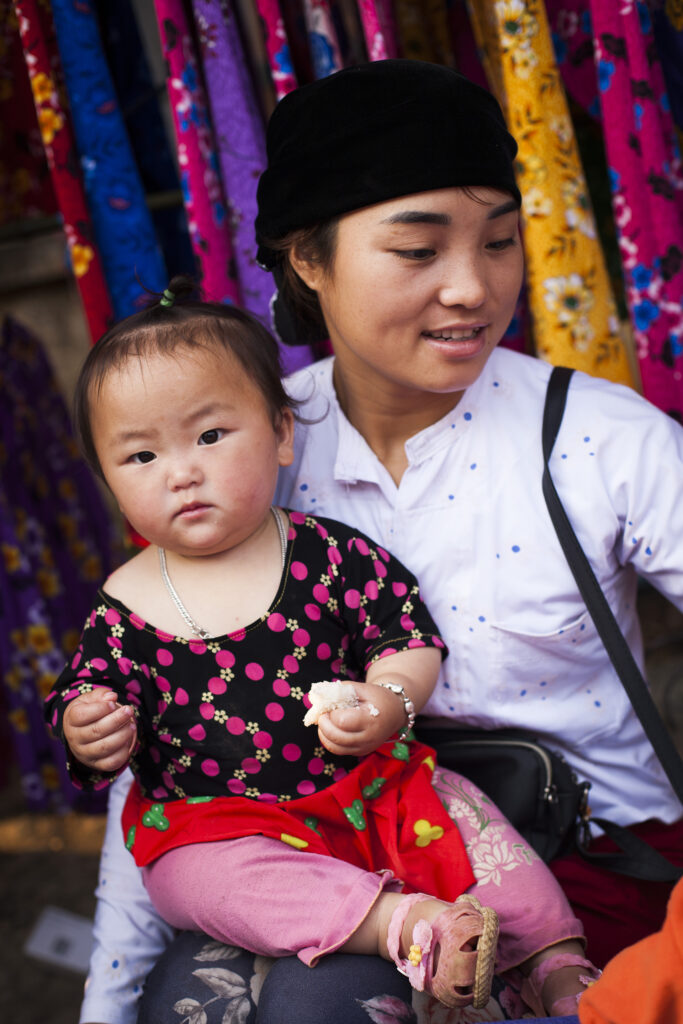
In 2022 I was fortunate enough to visit one of the Ha Giang Hmong People markets in Northern Vietnam. Here I first met the colorful Hmong ethnic people (also known as the Miao people), living in the very North of Vietnam, border to China. Please enjoy my Photo Art Stories of the Hmong People at the Du Gia market.
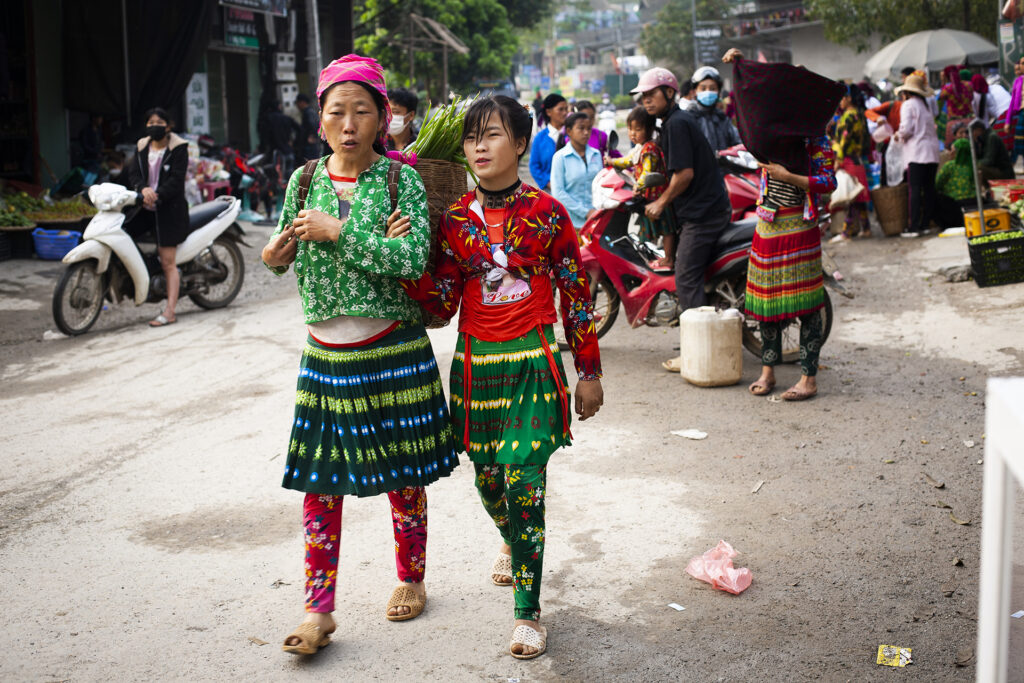
“The Hmong are members of an ethnic group that have not had a country of their own. For thousands of years, the Hmong lived in southwestern China. But when the Chinese began limiting their freedom in the mid-1600s, many migrated to Vietnam, Laos, Thailand and other neighboring countries.”
After picking up our Honda Wave rental bike,
We set out early morning from Ha Giang city and arrived at Yên Minh, Du Gia homestay in the sweltering midday. After a late afternoon outing to a nearby waterfall and gorgeous mountain surroundings, we had a traditional Vietnamese meal at the homestay and a well deserved sleep. I woke up early morning and went to explore the nearby area. I noticed some colorfully dressed Hmong people passing by but I was unaware of their desired destination.
When I got back to the homestay, my friend told me about the market in the village, so we headed straight there. My eyeballs were dancing around like a jack-in-the-box taking in all the color and beauty and character. I only had about 45min to walk around and take photographs before we had to continue on the rest of our day’s trip. I Wish I could’ve stayed longer but I savoured every minute!!
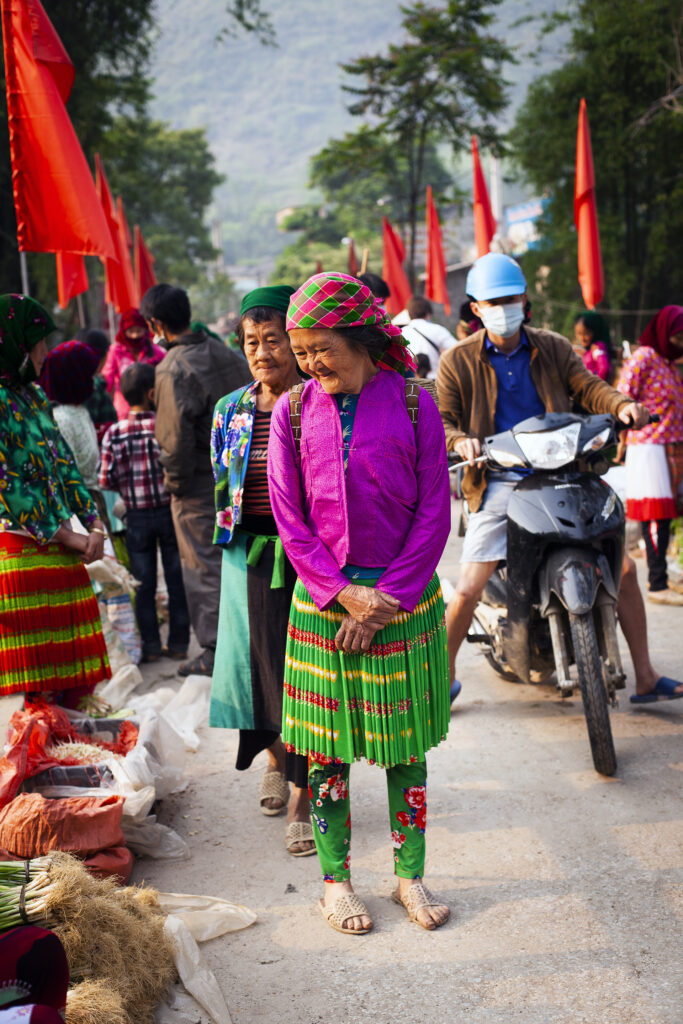
Unveiling the Cultural Tapestry: The Hmong People of Ha Giang, North Vietnam
Introduction to the Hmong people:
Nestled amidst the picturesque landscapes of Ha Giang, North Vietnam, lies a community steeped in history and rich cultural heritage – the Hmong people. Known for their distinctive fashion style and vibrant weekly markets, the ‘cho lui,’ the Hmong people of Ha Giang have captivated visitors with their unique traditions and way of life. In this blog post, we delve into the captivating history of the Hmong people, explore their fascinating fashion style, and unravel the charm of the ‘cho lui’ market in Du Gia, Yen Minh.
The history of rice wine in Ha Giang
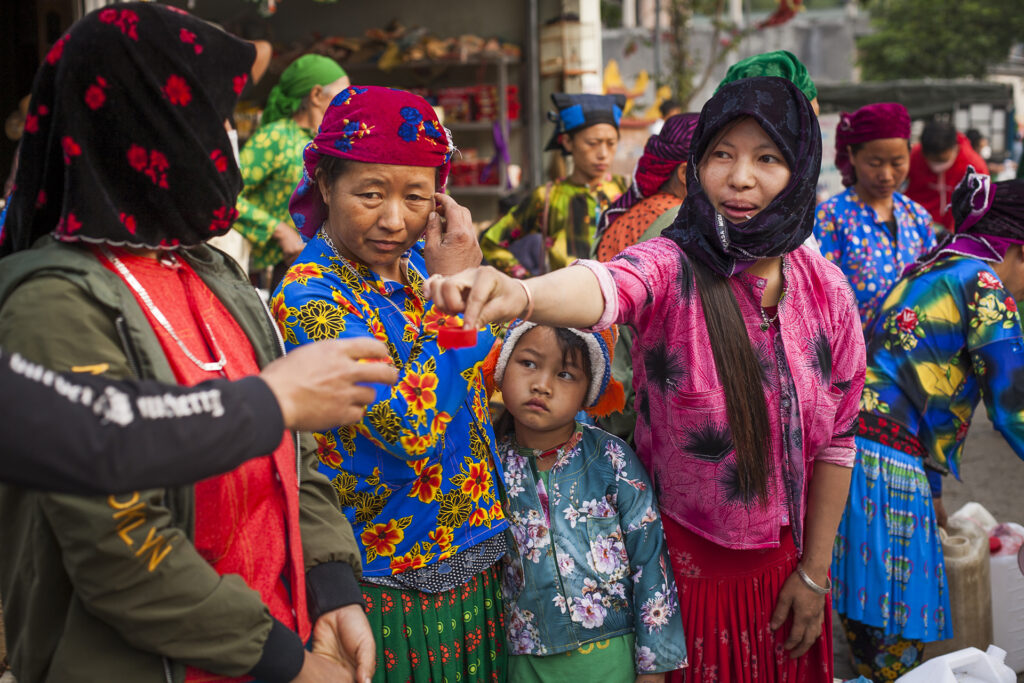
Anyone who has stayed over at a homestay in Vietnam has surely experienced the tradition of drinking the local rice wine. The history of homemade rice wine holds a special place in the cultural fabric of the Hmong people in Ha Giang, Vietnam. For generations, the art of crafting rice wine has been an integral part of their customs and celebrations, symbolizing unity, friendship, and ancestral reverence.
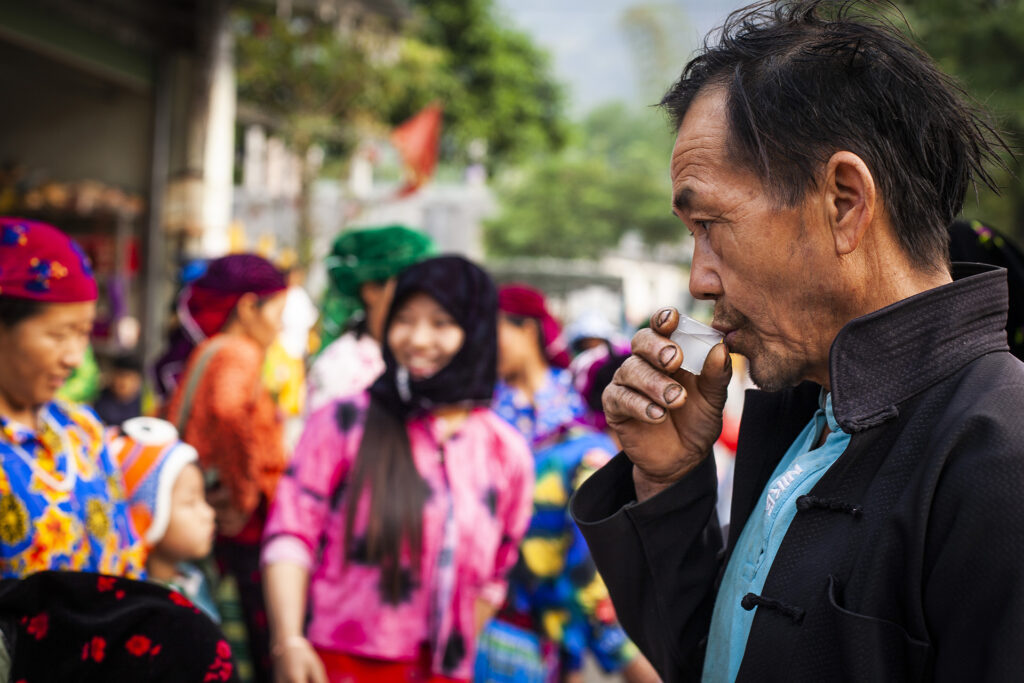

The process of making rice wine is a time-honored tradition passed down from elders to the younger generation, fostering a sense of community and continuity. From planting and harvesting rice to the meticulous fermentation process, the Hmong people infuse their rice wine with deep-rooted symbolism and blessings.
During festivals, weddings, and other significant occasions, the sharing of homemade rice wine becomes a sacred ritual, strengthening bonds and fostering a spirit of togetherness. The warmth and joy of sipping this cherished beverage embody the essence of the Hmong people’s heritage, creating an unforgettable experience for visitors fortunate enough to partake in their rich cultural traditions.
A Glimpse into Hmong History:
The Hmong people are an ethnic minority with roots tracing back thousands of years in the mountainous regions of China, Laos, Thailand, and Vietnam. Ha Giang, situated in northern Vietnam, has been home to the Hmong for generations, and their presence has played a significant role in shaping the region’s cultural diversity.
Unique Fashion Style:
One of the most visually striking aspects of the Hmong culture is their traditional attire. Each sub-group within the Hmong community showcases distinct garments, adorned with intricate embroidery and colorful patterns, reflecting their individual identity and ancestral roots.

Women’s clothing typically features a vibrant mix of red, green, and blue hues, meticulously embroidered with floral motifs and geometric patterns. Silver accessories, such as necklaces, bracelets, and earrings, hold great cultural significance and are often passed down through generations.
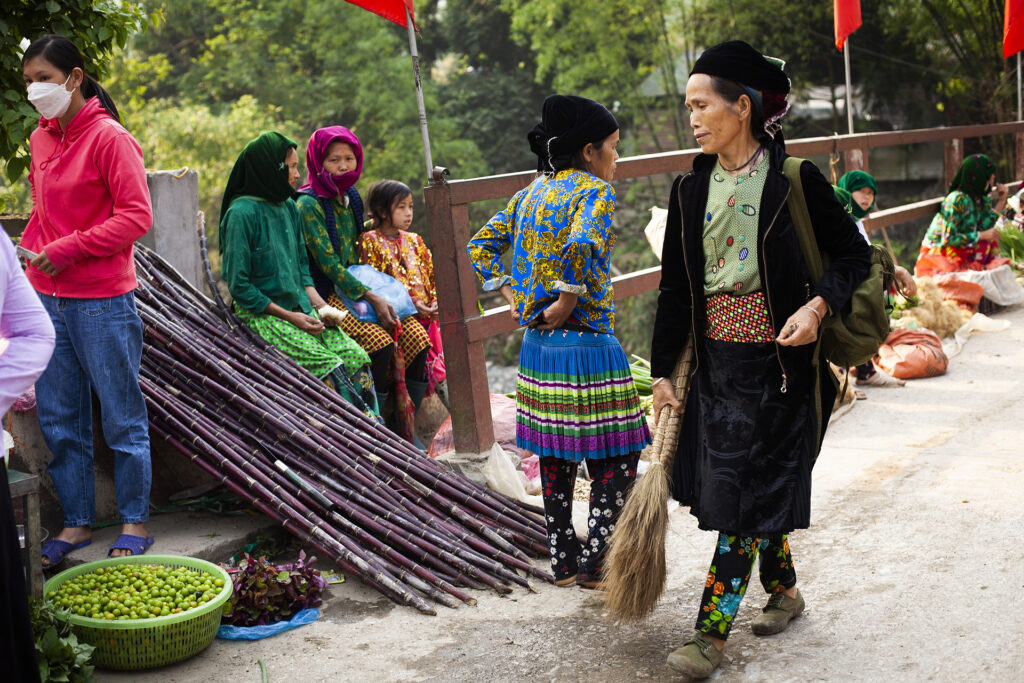

Men’s attire consists of dark-colored clothing, skillfully embroidered with symbols representing courage and strength. The intricate designs on their clothing are not only aesthetically pleasing but also a way of preserving their cultural heritage.
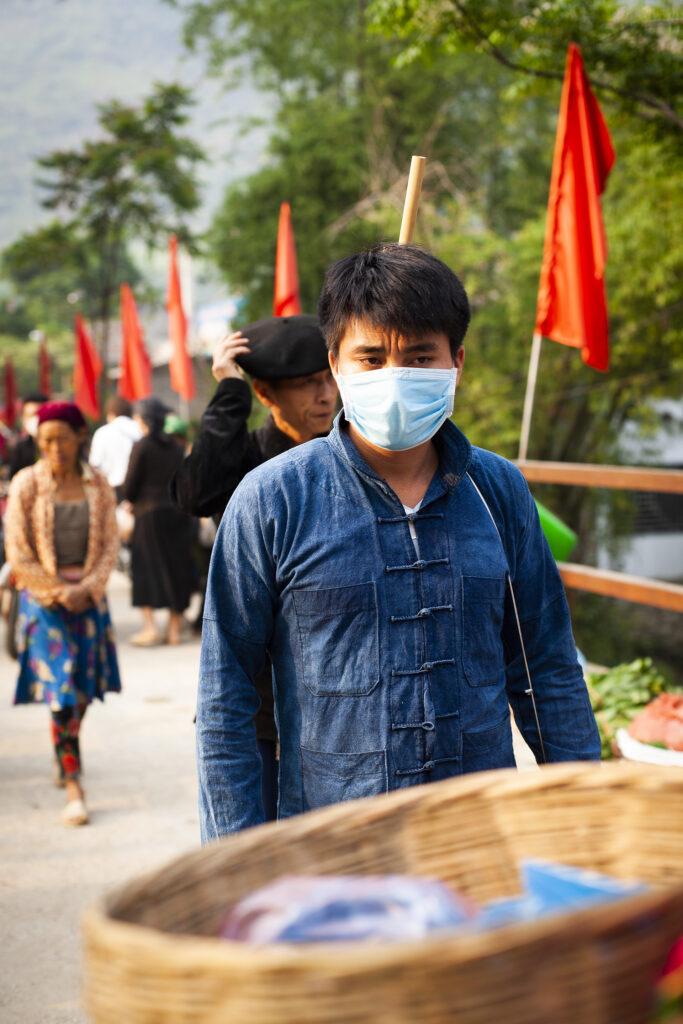
The Enchanting ‘Cho Lui’ Market in Duc Gia, Yen Minh:
Among the many vibrant markets in Ha Giang, the ‘cho lui‘ is a weekly gathering that holds immense cultural significance for the Hmong people, especially in Du Gia, Yên Minh. Every Saturday morning, the market comes alive with a kaleidoscope of colors, flavors, and traditions.
The ‘cho lui’ is not merely a place for bartering goods and produce; it serves as a social and cultural hub where Hmong families come together to celebrate, exchange news, and showcase their unique fashion styles. The market buzzes with laughter, chatter, and the rhythmic sounds of traditional music and dance, painting a vivid picture of community bonding.
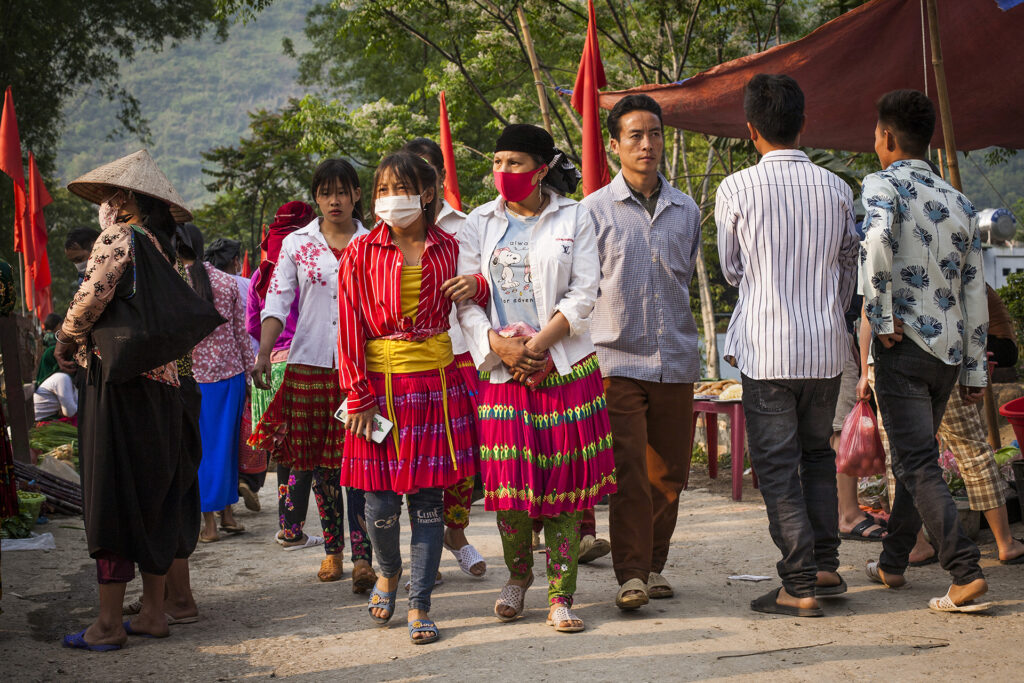
Visitors to the ‘cho lui’ will find an array of handmade crafts, textiles, fresh produce, and exotic spices on display. This bustling market allows travelers to immerse themselves in the local culture, witness age-old customs, and connect with the warmth and hospitality of the Hmong people.
The gorgeous Woven baskets of the Hmong

The traditional woven baskets crafted by the Hmong people in the mountains of Ha Giang, Vietnam, have a long and storied history deeply intertwined with their way of life. For centuries, these skilled artisans have been honing their craft, passing down techniques from one generation to the next. Woven with great care and precision, these baskets serve multifunctional purposes within the Hmong community.

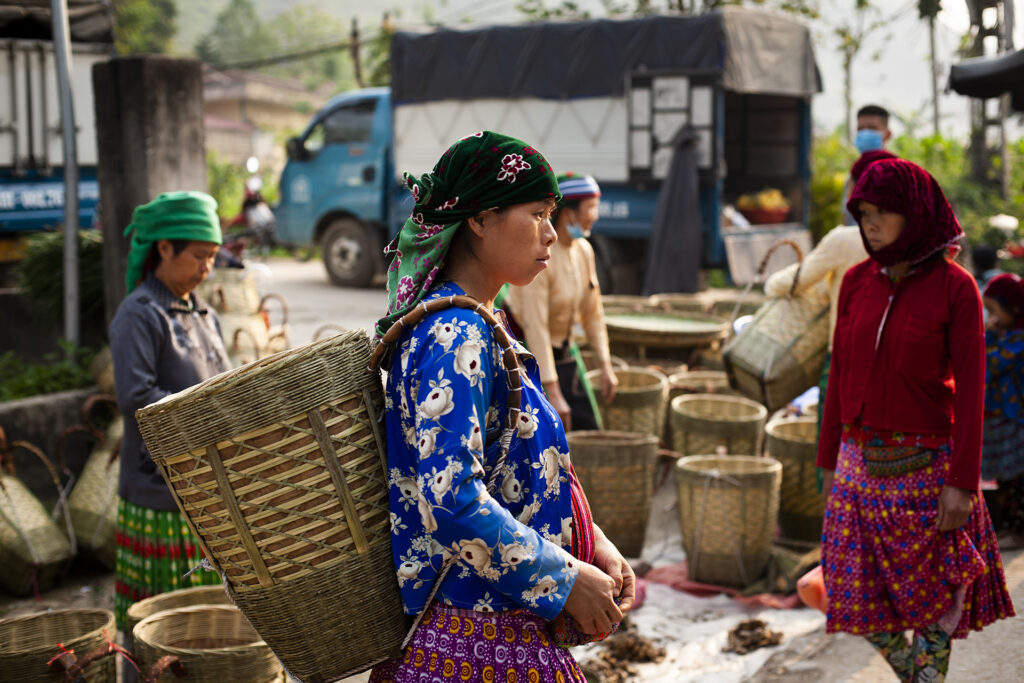
In their agricultural lifestyle, the baskets are used for gathering and transporting crops, while in daily household chores, they prove essential for storage and carrying various items. Beyond their utilitarian role, these intricately woven baskets also hold cultural significance, often featuring symbolic patterns and designs that reflect the Hmong people’s beliefs and folklore.
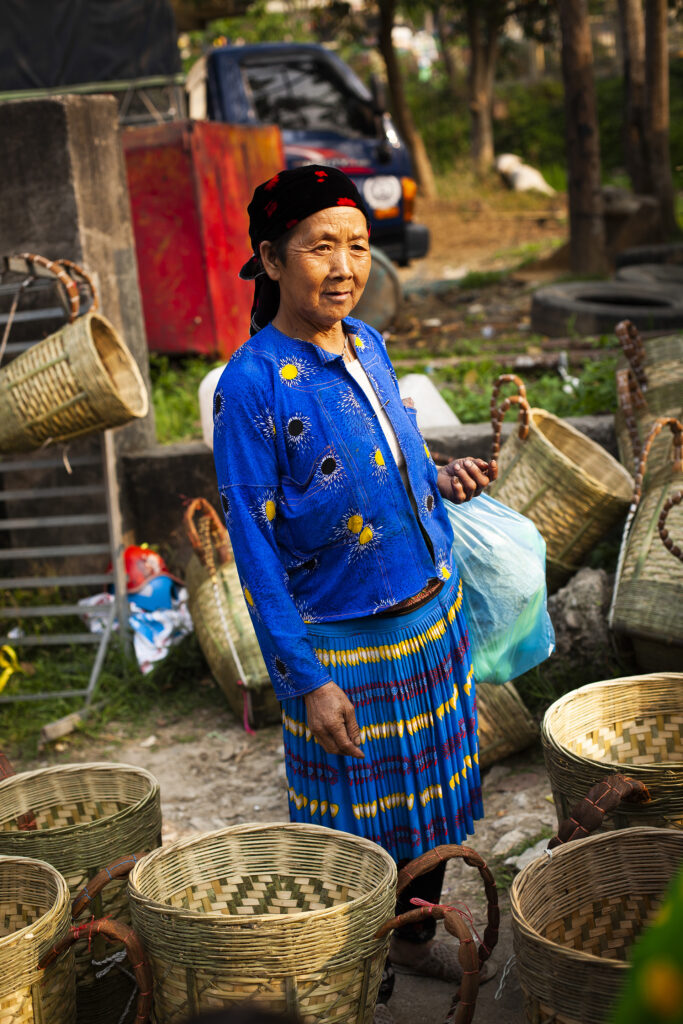
Furthermore, these baskets play a vital role in their vibrant markets, where they serve as carriers for goods or as attractive displays of traditional craftsmanship available for sale. As time advances and modern influences seep into the region, the preservation of these beautiful handwoven baskets becomes ever more vital in maintaining the Hmong people’s cultural identity and heritage.
Preserving Traditions in Du Gia:
In Du Gia, Yên Minh, the Hmong people are determined to preserve their ancestral traditions amidst the changing tides of modernity. Du Gia‘s unique location, nestled amidst breathtaking terraced rice fields and lush mountains, further enhances the charm of this cultural haven.

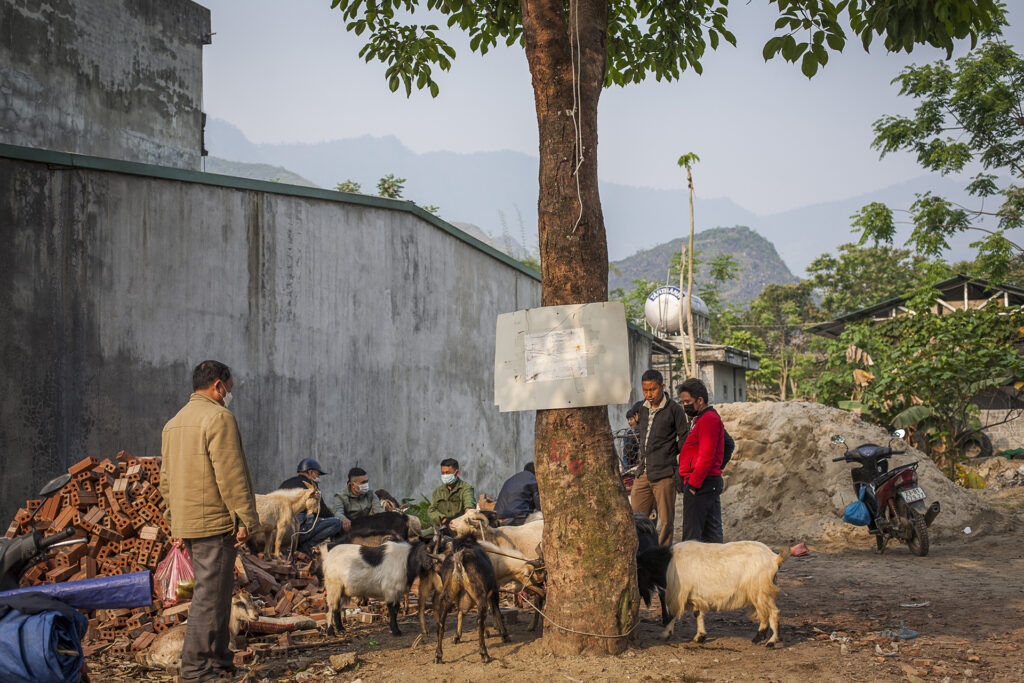
Du Gia‘s Hmong residents take immense pride in their culture and work diligently to pass down their customs and folklore to future generations. Visitors to the region are often welcomed with open arms, and locals are eager to share their stories, music, and culinary delights.

Conclusion:
The Hmong people of Ha Giang, North Vietnam, are a testament to the rich cultural tapestry of the region. From their distinctive fashion style, vibrant weekly markets like the ‘cho lui,’ to the enchanting village of Du Gia, the Hmong community continues to captivate travelers and enthusiasts alike with their storied history and enduring traditions. Exploring Ha Giang‘s Hmong heritage offers a unique opportunity to witness the beauty of cultural diversity and forge lasting connections with the heart and soul of Vietnam.

View more of Lavonne Bosman’s fabulous Photo Art Stories of Vietnam
To purchase some of my Vietnam or African Photo art prints, go to my Photo Art Stories shop on Etsy.
Some of my pictures from were also featured on a post about Ha Giang on VIETNAM IS AWESOME website

Reply
You must be logged in to post a comment.